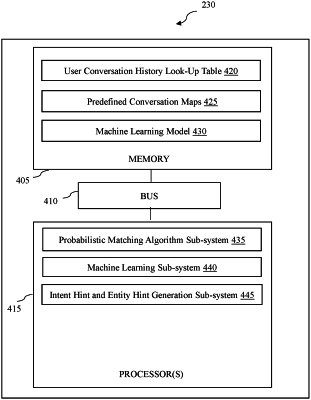| CPC G10L 15/1822 (2013.01) [G06N 20/00 (2019.01); G10L 13/08 (2013.01); G10L 15/1815 (2013.01); G10L 2015/228 (2013.01)] | 19 Claims |

|
1. A method for conducting a conversation between a user and a virtual agent, the method comprising:
determining an intent from a text message, the text message being derived from a plurality of utterances of a user;
generating, by a conversation management sub-system, a predefined conversation map based on predefined intents and the intent determined from the text message; and
generating, using multiple agent intents from multiple conversation block sub-systems, at least one text based agent response for the text message based on:
selecting, by the conversation management sub-system, at least one conversation block sub-system from a plurality of conversation block sub-systems accessible to the conversation management sub-system;
sending, by the conversation management sub-system, a request along with the intent to each selected at least one conversation block sub-system for execution of a specific function associated with the selected at least one conversation block;
at least one of accepting or denying, by the selected at least one conversation block sub-system, the request received from the conversation management sub-system based on a capability of the selected at least one conversation block sub-system to execute the specific function;
initiating, by the selected at least one conversation block sub-system, execution of the specific function related to the predefined conversation map upon acceptance of the request;
giving, by the selected at least one conversation block sub-system, a control of the request to at least one other conversation block sub-system of the plurality of conversation block sub-systems for executing a sub-function of the specific function, the at least one other conversation block sub-system executing the sub-function independent of an instruction from the conversation management sub-system;
regaining, by the selected at least one conversation block sub-system, the control from the at least one other conversation block sub-system upon completion of the sub-function; and
generating, by the selected at least one conversation block sub-system, an agent intent upon completion of the specific function,
wherein a first conversation block sub-system performs, without use of a first machine learning model, the execution of the specific function related to the predefined conversation map in response to the first conversation block generating, using a first probabilistic algorithm, a given agent intent that matches a logical state transition of the predefined conversation map, and wherein the first conversation block sub-system uses a first machine learning model to generate at least one of the agent intents in response to the first conversation block generating, using the first probabilistic algorithm, a given agent intent that does not match a logical state transition of the predefined conversation map.
|